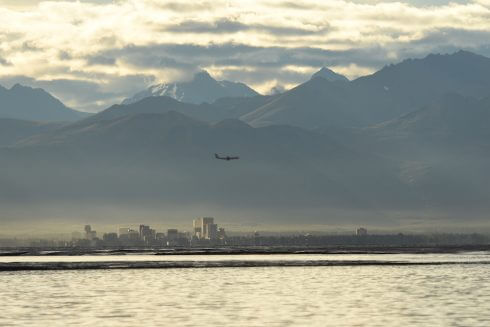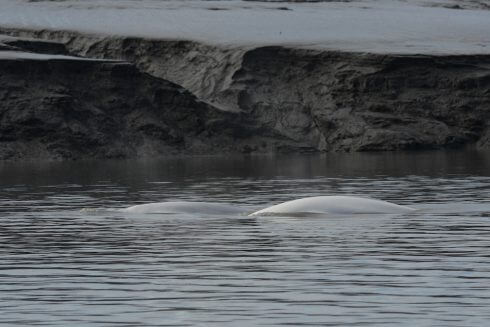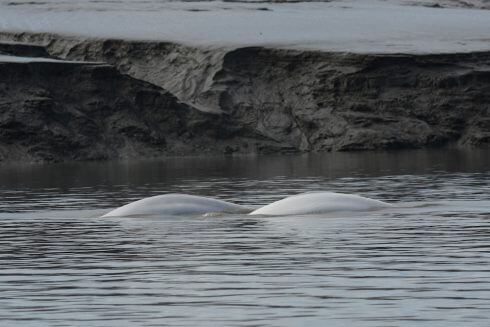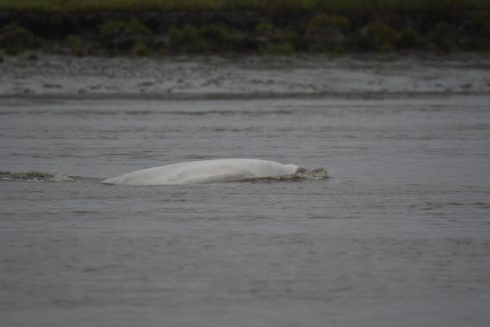Belugas in the Mud
From September 1 to 9, we were back in Anchorage, Alaska, for a second year in a row for the start of the Cook Inlet Beluga Biopsy Program.
A number of parallels can be drawn between the situation of the Cook Inlet belugas and that of the St. Lawrence belugas. Isolated from neighbouring populations of northern Alaska and the Arctic, they have nearly been driven to the brink of extinction. Since being designated an endangered species, they have been the subject of important protection measures and several research projects are underway to try and understand why they do not seem to be recovering. Their population is estimated at just over 300 individuals and may be declining.
In addition to collaborating on the biopsy program with the US National Oceanic and Atmospheric Administration (NOAA), we took advantage of our visit to Anchorage to further explore collaboration with the team of Tamara McGuire, who maintains the photo-ID catalogue of Cook Inlet belugas first initiated 14 years ago. Tamara and her colleague Amber Stephens spent a week with us in July on board the Bleuvet.
From the very first day out on the water with the Cook Inlet belugas, this image of belugas swimming in the liquid mud quickly returned to us. Once the initial shock had subsided, the joy of discovering other belugas, different but yet so similar, came back to us.












